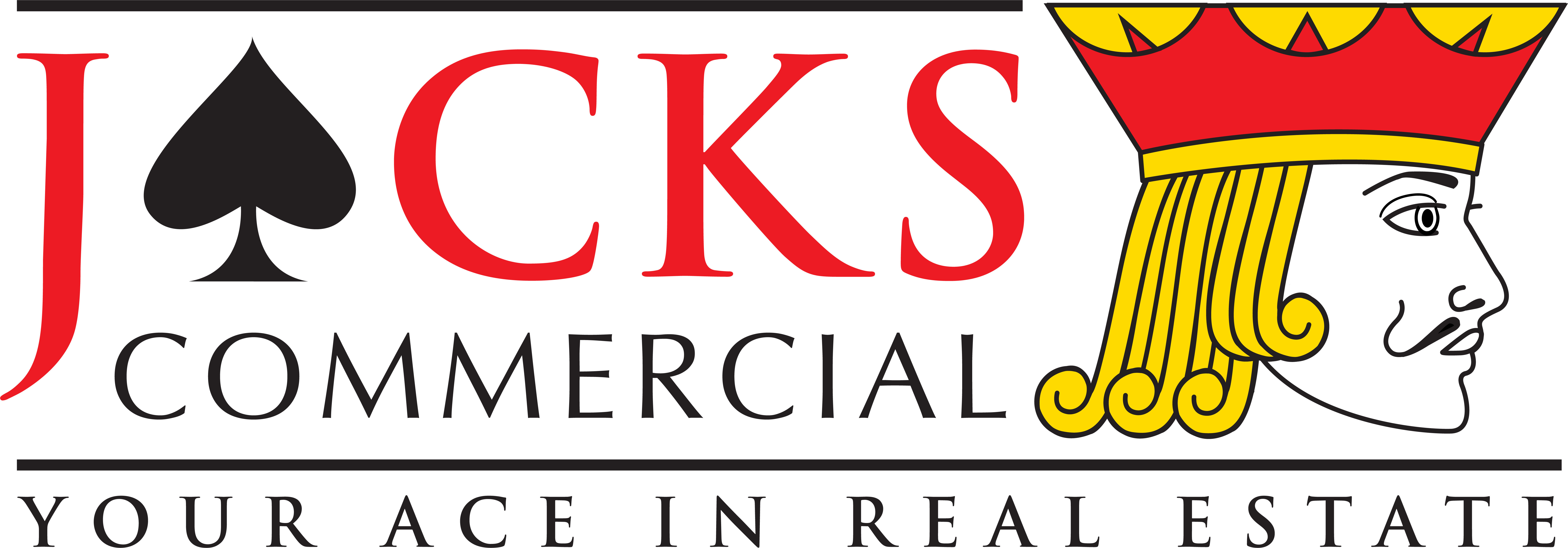
Sacramento's commercial real estate market stands at a pivotal moment, shaped by post-pandemic economic shifts, evolving work patterns, and California's ongoing housing and infrastructure challenges. Understanding the key trends and market forces that will drive Sacramento's commercial real estate performance over the next five years is essential for investors, developers, and business owners making strategic decisions in this dynamic market.
Economic Foundation and Growth Drivers
Sacramento's economic resilience provides a strong foundation for continued commercial real estate growth through 2030. The region's diversified economy, anchored by stable government employment but increasingly supported by technology, healthcare, and logistics sectors, creates demand across multiple commercial property types.
Population growth projections suggest Sacramento will continue attracting residents from more expensive California markets, particularly the Bay Area, while also drawing from other states seeking California's opportunities without coastal price premiums. This demographic growth drives demand for housing, retail services, office space, and industrial facilities.
The region's strategic location between major markets, combined with ongoing infrastructure investments in transportation and utilities, positions Sacramento to capture economic growth that may be constrained in other California markets by cost and regulatory barriers.
Office Market Evolution and Transformation
Sacramento's office market will likely undergo continued transformation over the next five years as hybrid work patterns become permanently embedded in business operations. Rather than a simple return to pre-pandemic patterns, the market is evolving toward a "flight to quality" where tenants prioritize modern, amenity-rich spaces that support flexible work arrangements.
Downtown Sacramento Revival: The urban core is positioned for significant growth as companies seek collaborative spaces that attract talent while taking advantage of relatively affordable rents compared to coastal markets. Mixed-use developments and adaptive reuse projects will likely drive much of this growth.
Suburban Office Evolution: Suburban office markets will increasingly compete on convenience and parking availability, serving companies that prioritize employee accessibility over urban amenities. Properties that can offer flexible lease terms and modern technology infrastructure will outperform traditional office buildings.
Flexible Workspace Integration: The lines between traditional office leasing and flexible workspace will continue blurring, with landlords incorporating co-working elements and short-term rental options to attract diverse tenant bases.
Build-to-Suit Opportunities: Companies seeking custom spaces that support their specific work cultures may drive demand for build-to-suit projects, particularly for technology and professional service firms relocating from the Bay Area.
Industrial and Logistics Market Expansion
Sacramento's industrial market is expected to experience continued strong growth driven by e-commerce expansion, supply chain modernization, and the region's strategic logistics advantages.
Last-Mile Delivery Growth: As consumer expectations for rapid delivery continue rising, demand for smaller distribution facilities closer to population centers will drive development in Sacramento's growing suburban areas.
Cold Storage and Specialized Facilities: The growth in online grocery shopping, meal delivery services, and pharmaceutical distribution will continue driving demand for temperature-controlled and specialized storage facilities.
Manufacturing Return: Some manufacturing operations may relocate to Sacramento from higher-cost markets, particularly companies serving West Coast markets or those requiring proximity to ports and transportation infrastructure.
Automation Integration: Industrial properties will increasingly incorporate automation and technology systems, requiring higher ceiling heights, specialized power systems, and technology infrastructure that may drive renovation and new construction.
Retail Real Estate Adaptation and Growth
Sacramento's retail market is expected to continue its evolution toward experience-based and service-oriented retail concepts while maintaining strong demand for essential retail services.
Neighborhood Center Strength: Grocery-anchored neighborhood centers will likely continue outperforming other retail categories, particularly in Sacramento's growing suburban areas where new residential development creates demand for convenient retail services.
Entertainment and Dining Integration: Retail developments that successfully integrate dining, entertainment, and experiential retail will likely command premium rents and maintain high occupancy rates.
Health and Wellness Focus: Retail concepts focused on health, wellness, and personal services are expected to grow, serving Sacramento's increasingly health-conscious and aging population.
Adaptive Reuse Opportunities: Underperforming traditional retail spaces may find new life through conversion to mixed-use developments, medical facilities, or specialized service uses.
Multifamily Housing Market Dynamics
Sacramento's multifamily market faces strong fundamentals driven by continued population growth and limited new supply, but will also confront affordability challenges and regulatory changes.
Build-to-Rent Growth: Purpose-built rental housing, particularly single-family rental developments, may capture increasing market share as homeownership becomes less accessible for many Sacramento residents.
Affordable Housing Requirements: Increasing affordable housing mandates and inclusionary housing requirements will affect development economics while creating opportunities for developers who can navigate regulatory complexity.
Senior Housing Demand: Sacramento's aging population will drive demand for various senior housing products, from active adult communities to assisted living facilities.
Student Housing Evolution: Properties serving UC Davis, Sacramento State, and other educational institutions may evolve to accommodate changing student preferences and educational delivery methods.
Technology Integration and Smart Buildings
The next five years will likely see accelerated adoption of technology solutions that improve building efficiency, tenant experience, and property management effectiveness.
Smart Building Systems: Properties with integrated technology systems for energy management, security, and tenant services will likely command premium rents and attract higher-quality tenants.
Health and Safety Technology: Building systems that monitor air quality, manage occupancy levels, and provide touchless interfaces will become standard expectations rather than luxury amenities.
Property Management Technology: Digital platforms for rent collection, maintenance requests, and tenant communication will become essential tools for competitive property management.
Data Analytics: Property owners will increasingly use data analytics to optimize operations, predict maintenance needs, and enhance tenant satisfaction.
Regulatory Environment and Policy Changes
Sacramento's commercial real estate market will continue being shaped by evolving regulations at local, state, and federal levels.
Climate Change Regulations: Increasing focus on building energy efficiency and greenhouse gas reduction will drive retrofit requirements and influence new construction standards.
Affordable Housing Policies: Continued focus on housing affordability will affect development requirements and may create new incentive programs for commercial developers who include housing components.
Transportation and Infrastructure Investment: Ongoing investment in light rail expansion, highway improvements, and other infrastructure will influence development patterns and property values throughout the region.
Zoning and Development Process Reform: Efforts to streamline development approvals and increase housing supply may create new opportunities while changing development economics.
Capital Markets and Investment Trends
Commercial real estate capital markets serving Sacramento are expected to evolve in response to changing investor preferences and market conditions.
Institutional Interest Growth: Sacramento's improving market fundamentals and relative value compared to coastal markets may attract increased institutional investment, potentially affecting pricing and competition.
ESG Investment Focus: Environmental, social, and governance considerations will increasingly influence investment decisions, favoring properties with strong sustainability profiles and community benefits.
Alternative Investment Structures: New investment vehicles and structures may emerge to serve smaller investors and provide more flexible capital sources for commercial real estate projects.
Interest Rate Sensitivity: Commercial real estate values and investment activity will remain sensitive to interest rate changes, requiring careful attention to financing strategies and market timing.
Emerging Opportunities and Niche Markets
Several emerging trends may create new commercial real estate opportunities in Sacramento over the next five years.
Healthcare Real Estate: An aging population and changing healthcare delivery methods may drive demand for various healthcare real estate products, from urgent care centers to specialized medical facilities.
Data Centers and Technology Infrastructure: Sacramento's affordable power, strategic location, and business-friendly environment may attract data center development serving Northern California's technology sector.
Creative and Maker Spaces: Demand for affordable workspace for artists, craftspeople, and small manufacturers may create opportunities for adaptive reuse projects and specialized developments.
Educational Facilities: Growth in specialized education, training programs, and alternative educational models may drive demand for flexible educational facilities.
Risk Factors and Challenges
Despite strong fundamentals, Sacramento's commercial real estate market faces several potential challenges over the next five years.
Regulatory Uncertainty: Changing regulations and policy initiatives could affect development costs, property operations, and investment returns.
Infrastructure Strain: Rapid growth may strain existing infrastructure, potentially requiring significant public and private investment to maintain service levels.
Affordability Crisis: If housing costs continue rising faster than incomes, Sacramento may face workforce retention challenges that could affect economic growth and commercial real estate demand.
Climate Change Impacts: Increasing wildfire risk, water supply challenges, and extreme weather events may affect property values and insurance costs.
Strategic Recommendations for Market Participants
Success in Sacramento's evolving commercial real estate market will require adaptive strategies that anticipate change while capitalizing on fundamental growth drivers.
Diversification: Investors should consider diversified portfolios across property types and geographic areas within Sacramento to manage risk while capturing growth opportunities.
Quality Focus: Properties that provide superior tenant experiences through modern amenities, flexible spaces, and technology integration will likely outperform average properties.
Local Expertise: Working with professionals who understand Sacramento's unique market dynamics, regulatory environment, and growth patterns will become increasingly valuable.
Long-Term Perspective: While short-term volatility may continue, Sacramento's fundamental growth drivers support long-term commercial real estate appreciation for patient investors.
